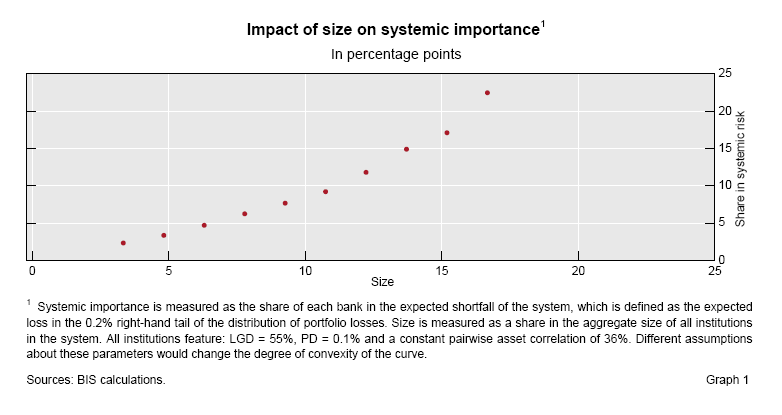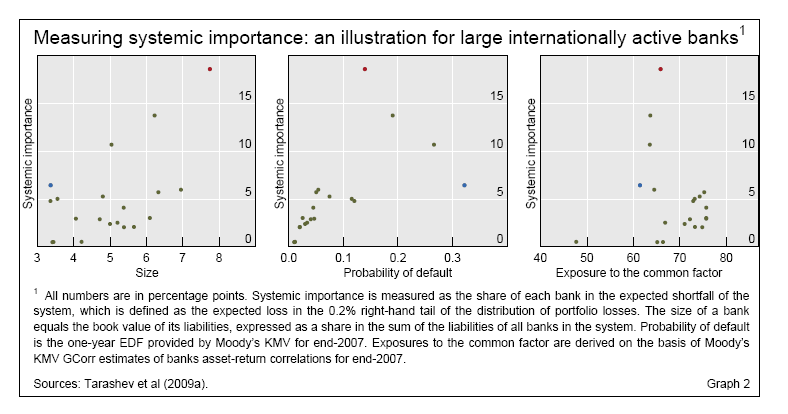The international policy response to financial crises: making the macroprudential approach operational
Panel remarks by Mr Jaime Caruana, General Manager of the BIS, at Jackson Hole, 21-22 August 2009.
Abstract
There is now a widespread consensus on the need to strengthen the macroprudential orientation of regulatory and supervisory frameworks. The international community is moving closer to practical implementation. A number of recent analytical findings in BIS work point to the challenges involved in making the macroprudential approach operational and that can usefully inform policy decisions. Most importantly, the macroprudential approach will have to be accompanied by other policies to achieve the desired objectives of a more stable and resilient financial system.
Full speech
I have been asked to present some views on the international policy response to financial crises. I believe that such a response should be both broad-ranging and far-sighted; it should cover macroeconomic and financial policies; and it should build new and more robust arrangements for the future instead of responding just to the short-term challenges raised by the crisis.
Today, I will focus on only one aspect of this task, the need to strengthen the macroprudential orientation of regulation and supervision. To be sure, the term "macroprudential" is not new. It was coined at the BIS in the late 1970s. Its meaning was clarified in a then controversial speech by my predecessor Andrew Crockett, BIS General Manager in 2000. And it has been subsequently refined in analytical work. The need to adopt a macroprudential approach has now become part of the conventional wisdom.1
Specifically, I would like to do three things. First, I will recall briefly what this approach is all about. When terms come into common use, their meaning can become blurred. Second, I will suggest principles that can help to make the approach operational. Finally, I will note a few findings of recent BIS analytical work that can inform upcoming policy decisions.
I. The macroprudential approach
The macroprudential approach focuses on the financial system as a whole, as opposed (and in addition) to individual institutions. Moreover, it treats aggregate risk as dependent on the behaviour of financial institutions: actions that may be individually rational can result in undesirable aggregate outcomes.
To this end, two dimensions should be considered. The first relates to how risk is distributed within the financial system at a given point in time - the "cross-sectional dimension". The second relates to how aggregate risk evolves over time - the "time dimension".
Regarding the cross-sectional dimension, the key policy concern is how to address the common exposures that create the possibility of joint failures of financial institutions. These common exposures arise because financial institutions are either similar to each other (eg have a similar assets structure) or interconnected. The guiding policy principle must be to calibrate prudential tools to individual institutions' contribution to system-wide risk, regardless of the institutions' legal form - everything important must be inside the perimeter of regulation.
As regards the time dimension, the key concern relates to how system-wide risk can be amplified by interactions within the financial system as well as feedback between the financial system and the real economy. This is what procyclicality is all about. Credit extension and leverage, risk perceptions and risk appetite, asset prices and economic activity, all reinforce each other over time. The system becomes more complex, with non-linear dynamics. Individuals and firms become overextended in good times, and the sustainable becomes unsustainable, with excessive retrenchment in bad times. The guiding policy principle must be to build countercylical capital buffers in good times, when it is easier and cheaper to do so. This can act as a brake, restraining risk-taking. In bad times, running down the buffers allows the system to absorb emerging strains more easily, dampening the amplifying mechanisms.
II. The macroprudential approach: how to implement it?
The aim is both to strengthen the macroprudential orientation of regulatory and supervisory frameworks and to achieve a better union between the macro- and microprudential perspectives. Let me stress three guidelines that can guide the efforts under way.
First, the approach must be holistic. There is a tendency to think that capital regulation can do it all, with the serious risk of overburdening it. In fact, the whole spectrum of regulatory and supervisory tools should play a role. These include liquidity standards, collateral and margining requirements, underwriting standards and insurance schemes. Moreover, prudential tools alone cannot secure financial stability. The market infrastructure must be strengthened further by shifting trading to central counterparties, among other things. Accounting standards have to be reviewed to ensure greater consistency with sound risk management. We must push for the adoption of more forward-looking countercyclical loan provisioning. Ways must be found to promote the orderly resolution of large and complex financial institutions. And last, but not least, macroeconomic policies must be enlisted to help: both fiscal and, crucially, monetary policy are part of the solution.
Second, the approach should rely as far as possible on rules rather than discretion. This is especially important when dealing with procyclicality. As long as rules are not too ambitious, they can help reduce errors that can arise from difficulties in identifying threats to financial stability in real time - dynamic provisions are a good example of such rules. In addition, clear rules can act as effective pre-commitment devices, facilitate international coordination and be more easily understood and internalised by market participants. More importantly, rules reduce the enormous political economy pressures on policymakers to refrain from acting during booms. However, rules may not be enough: discretion has a role to play as it can help tailor intervention to varying, and often unpredictable, circumstances.
Third, careful thought must be given to the institutional setup and to international coordination. It is crucial to align goals, know-how and control over the myriad of policy instruments. The distribution of responsibilities for financial stability may complicate this task. The institutional setup should be based on precise mandates and clear accountability. It will need to rely on close cooperation between central banks and supervisory authorities, both within and across borders.
Many efforts are now under way to make the macroprudential approach operational, nationally and internationally. The BIS and the committees it hosts are deeply involved in these efforts. In particular, the Basel Committee on Banking Supervision has strengthened the microprudential regulation in areas such as regulatory capital (eg for the trading book and resecuritisation), funding liquidity, stress testing and disclosure. It is also developing a macroprudential overlay that includes a countercyclical capital buffer and practical steps to address the risks arising from systemic, interconnected banks.
III. The macroprudential approach: analytical insights
Let me elaborate on recent BIS analytical work designed to operationalise the macroprudential approach with respect to both its cross-sectional and its time dimension.
The cross-sectional dimension: calibrating tools with respect to systemic importance
In the cross-sectional dimension, the task is to capture system-wide risk and to adjust prudential tools based on individual institutions' contribution to it. Examples could be a "systemic capital charge" or institution-specific systemic insurance premia.
In addressing this issue, one immediately runs into problems. There is no consensus on how to measure system-wide risk. Another issue is that aggregate risk in the financial system does not always equal the sum of the risks of individual institutions. The interrelations across institutions matter and greatly complicate the measurement of an individual contribution of to systemic risk. The difficulty is thus how to allocate systemic risk to each individual institution.
Work at the BIS suggests that solutions can be developed that can help thinking about system-wide risk and individual institutions' contribution to it.2 Technology exists to provide estimates of system-wide risk. In addition, by drawing on game theory concepts one can create a methodology that delivers estimates of individual contributions to systemic risk that add up exactly to the total. Such a methodology has several intuitive properties: it can be applied to a wide variety of measures of system-wide risk, including popular ones such as value-at-risk (VaR), expected shortfall or CoVaR,3 it helps identify and quantify the drivers of contributions to systemic risk; and it is well suited to deal with model and parameter uncertainty.
To illustrate the tool, think of financial institutions as analogous to individual securities, with the system as a portfolio. Next, think of system-wide risk as the extreme system-wide losses due to the failure of institutions. The key drivers of systemic risk are then the riskiness of each institution (captured by its probability of default or insolvency and its loss-given-default), the institution's relative size, and the extent to which it is exposed to the same risks as others (its exposure to "common risk factors"). The procedure can then quantify the impact of a shock to the system. It shows, for instance, by how much the contribution to systemic risk increases as an institution becomes more similar to the rest. And it indicates how the impact of size, individual riskiness and increased similarity compound each other, in highly non-linear ways.
This stylised analysis yields three rather robust results. First, there is a potential trade-off between diversification at the level of individual institutions and at the level of the system. By diversifying its portfolio, and hence reducing its own riskiness, an institution could become more similar to others, increasing the likelihood that it would fail along with them. This can increase both overall systemic risk and the institution's contribution to it.
Second, the contribution to systemic risk increases more than proportionately with relative size. This is illustrated in Graph 1, which shows how the contribution to systemic risk varies in a hypothetical system in which all institutions are identical except for their size. The main intuition for this result is that large institutions play a disproportionate role in extreme events. Many small firms would have to fail simultaneously to have the same impact as that of the failure of a single, large firm. This provides support for tighter supervisory standards, including higher minimum capital requirements, for large institutions. However, the practical implementation of this should be pragmatic, not least because of associated moral hazard issues. In particular, an institution selected because of the importance of its contribution to system-wide risk should not be considered "too big to fail" if it is not viable.
Third, for a target level of system-wide risk, a policy intervention that equalises the contributions to system-wide risk (per unit of size) for determining the capital requirement of each institution may economise on the overall amount of capital in the system. It would use capital more "efficiently" than an alternative intervention that equalises the riskiness of individual institutions, as is conceptually done in present regulatory arrangements. (We can think of capital as a proxy for the probability of default of each institution.) When contributions to systemic risk are equalised, the increase in the capital of larger institutions is more than compensated for by the reduction that occurs in the smaller ones.
Graph 2 illustrates how this approach can be applied in practice to a set of large internationally active institutions.4 The result shows the influence of the various drivers of an institution's contribution to system-wide risk. For example, the largest institution is the one with the highest systemic importance (red dot, left-hand panel). The graph also makes clear that the interaction of various factors is critical. For instance, another systemically important institution - representing the fourth largest contribution to system-wide risk among the set of institutions considered - is also one of the smallest in size (blue dot, left-hand panel); this primarily reflects its comparatively higher probability of default (blue dot, centre panel).
The time dimension: countercyclical capital buffers
In addressing procyclicality - the time dimension of the macroprudential approach - the international community has attached great importance to the creation of countercyclical capital buffers for banks.5 The basic idea is that banks should build up capital in good times in order to be able to draw it down in bad times. There are many ways in which this can be done. One is to link regulatory capital to some system-wide, macroeconomic variables that track the financial cycle. Another is to relate buffers to each bank's individual performance (eg its own lending, profits or asset growth).
In analytical work at the BIS, we have explored a broad set of approaches and reached the following conclusions.
First, it is difficult to find a single macroeconomic variable that can reliably track both good and bad times. For example, credit is especially good for the build-up phase, but its contraction often lags the emergence of incipient strains, so it could indicate a release that is too slow. Credit spreads are not very reliable across cycles and are not available consistently across countries. Aggregate banking sector profits have some good properties as they link the building up of capital with the capacity to do so. But they exhibit limited variation in good times and may thus fail to track the build-up of risks fully.
The reason for this general difficulty is that the best variable to guide the build-up phase would also be the best leading indicator of financial distress, and the best to guide the release phase would be the best contemporaneous indicator of banking distress. It is hard to imagine how the same variable could be the best leading and contemporaneous indicator of financial distress!
Second, the release phase of the buffer may have to be quite abrupt. While vulnerabilities build up slowly, often over years, financial distress emerges quite rapidly, sometimes in months. Unless capital, unencumbered by regulatory constraints, is made available quickly, banks will not be able to draw on it when they need it most.
Third, indicators based on individual bank characteristics can be quite idiosyncratic. As a result, adjustments to regulatory capital based on such indicators could vary substantially from period to period and from bank to bank. It is thus important to try to complement the analysis with financial cycle indicators based on aggregate variables.
The solution is to be pragmatic and cross-check a number of variables: relying on a set of imperfect indicators is better than considering none at all.
I do not wish to prejudge the outcome of current efforts to develop countercyclical capital buffer schemes. Substantial work is under way. Let me just note that the final outcome will need to take into account the facts I have just highlighted and be pragmatic in its implementation.
To conclude, there is now a widespread consensus on the need to strengthen the macroprudential orientation of regulatory and supervisory frameworks. The international community is moving closer to practical implementation. I have indicated what I see as the most promising broad direction ahead. Most importantly, the macroprudential approach will have to be accompanied by other policies to achieve the desired objectives of a more stable and resilient financial system. I have also noted a number of recent analytical findings in BIS work that point to the challenges involved in making the macroprudential approach operational. These findings can be useful in informing policy decisions.
References
Adrian, T and Brunnermeier M (2009): "CoVaR", Federal Reserve Bank of New York Staff Reports, no 348, revised, August.
Bank for International Settlements (2009a): 79th Annual Report, Basel, June.
--- (2009b): "Addressing financial system procyclicality: a possible framework", note for the FSF Working Group on Market and Institutional Resilience, April.
Borio, C (2003): "Towards a macroprudential framework for financial supervision and regulation?", CESifo Economic Studies, vol 49, no 2/2003, pp 181-216. Also available as BIS Working Papers, no 128, February.
Crockett, A (2000): "Marrying the micro- and macroprudential dimensions of financial stability", speech at the 11th International Conference of Banking Supervisors, Basel, 21 September.
Knight, M D (2006): "Marrying the micro- and macroprudential dimensions of financial stability: six years on", speech at the 14th International Conference of Banking Supervisors, Mérida, 4-5 October.
Tarashev, N, C Borio and K Tsatsaronis (2009a): "The systemic importance of financial institutions", BIS Quarterly Review, September (forthcoming).
--- (2009b): "Allocating systemic risk to individual institutions: methodology and policy applications", BIS Working Papers, forthcoming.
1 See BIS (2009a), Borio (2003), Crockett (2000) and Knight (2006).
2 See Tarashev et al (2009a, 2009b) and BIS (2009a).
3 See Adrian and Brunnermeier (2009). They proposed CoVaR as a measure for systemic risk, defined as the VaR of financial institutions conditional on other institutions being in distress. They define an institution's (marginal) contribution to systemic risk as the difference between CoVaR and the financial system's VaR.
4 The measure of systemic risk is expected shortfall; probabilities of default and risk factors are estimated at end-2007, based on equity prices and applying standard techniques; size is proxied by the book value of liabilities.
5 For a recent broader discussion of procyclicality and the possible policy response, see BIS (2009b).



